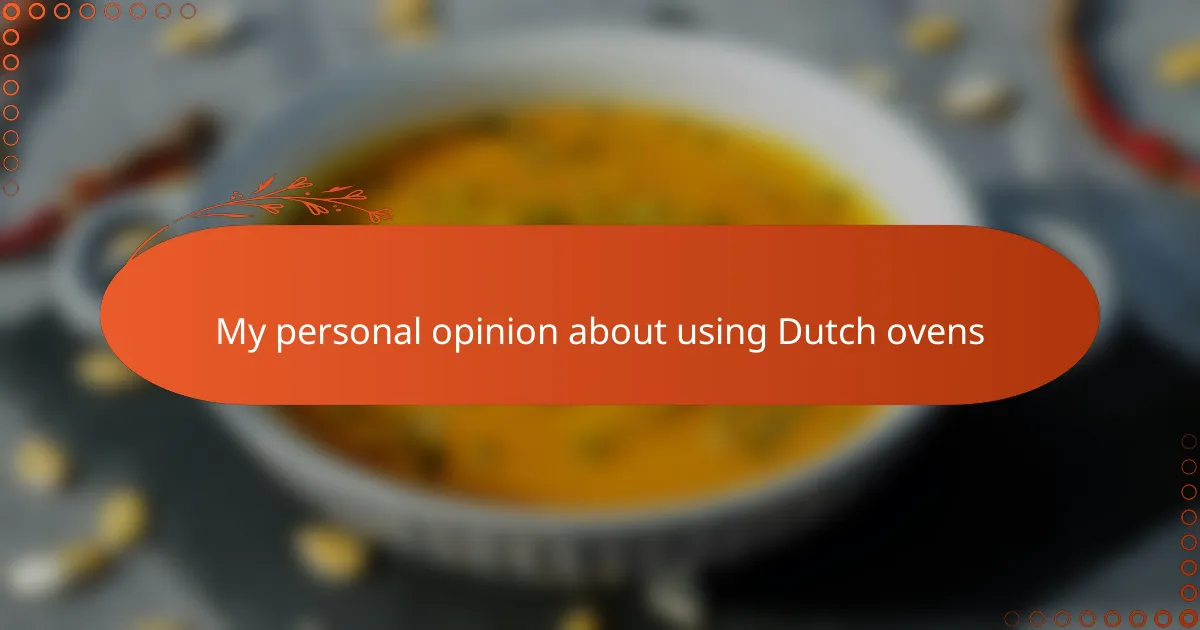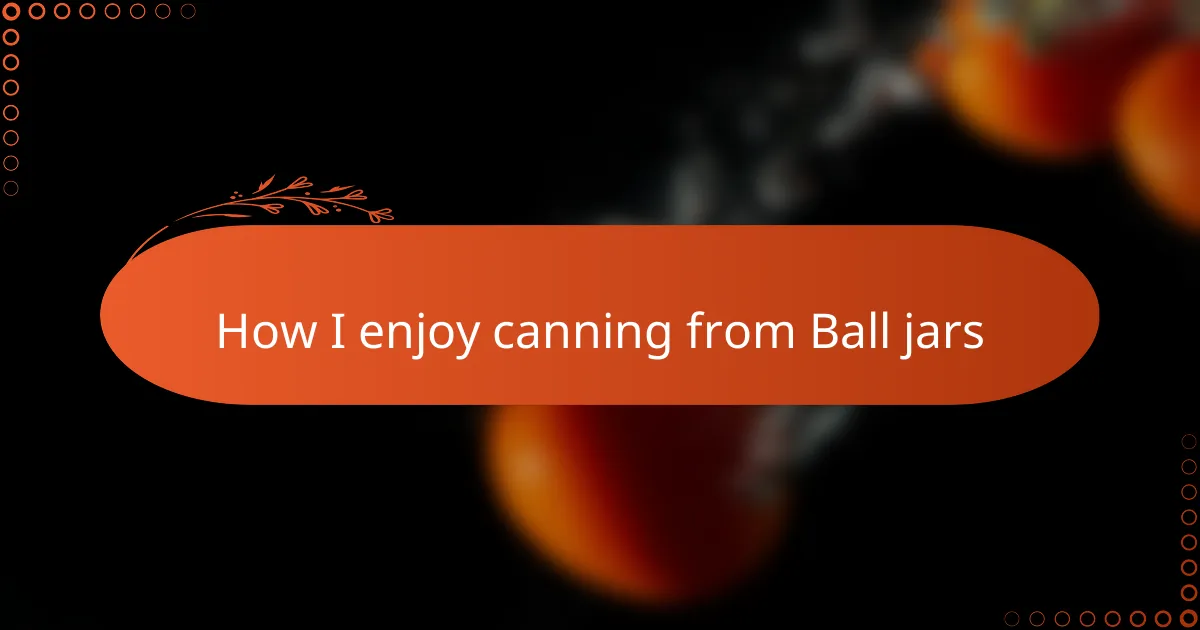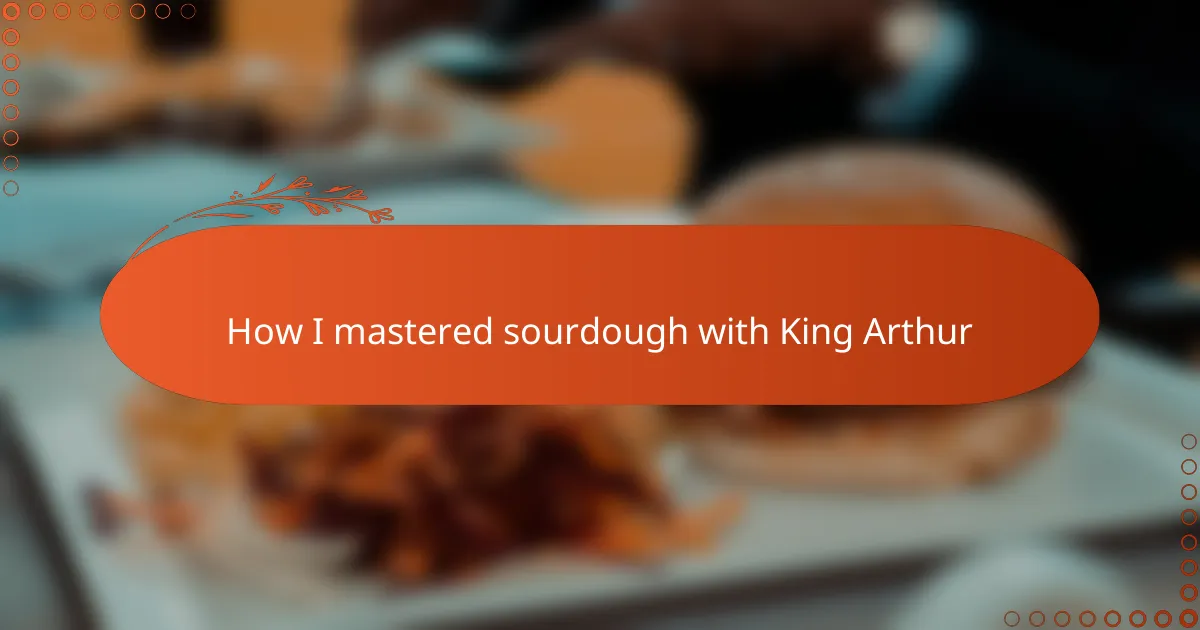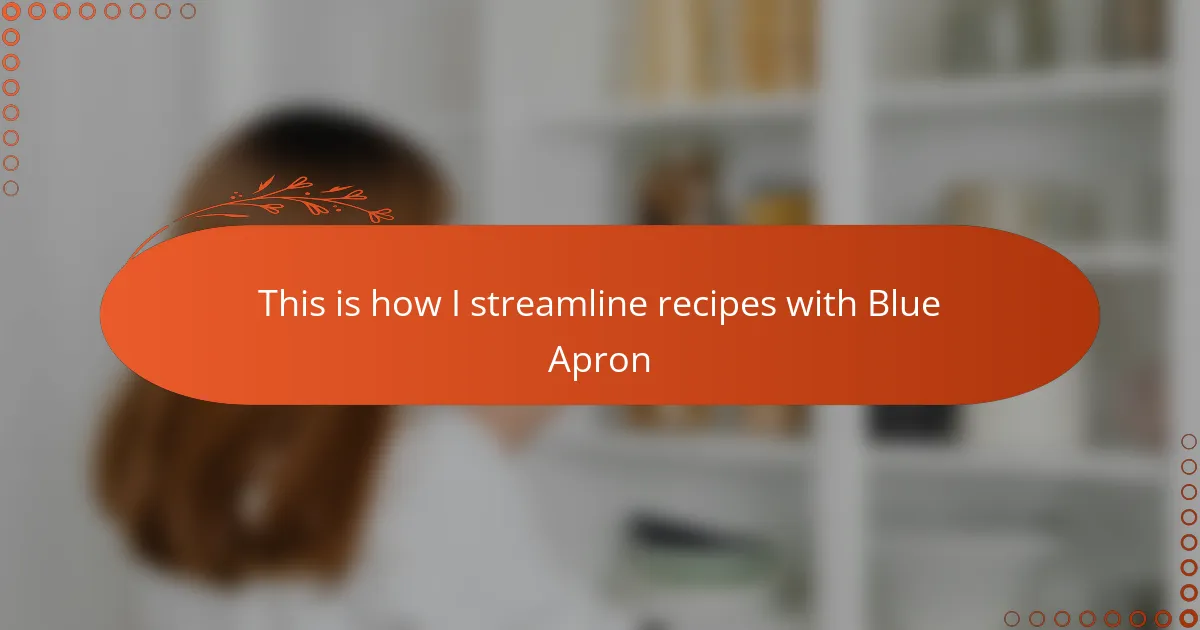Key takeaways
- Dutch ovens are versatile, durable, and ideal for homesteading, allowing for various cooking methods such as baking, frying, and stewing.
- Proper seasoning and gentle cleaning techniques are essential to maintain the pot’s effectiveness and longevity.
- Using a Dutch oven enhances cooking consistency and flavor, especially with slow cooking and braising techniques.
- Integrating a Dutch oven into daily cooking simplifies meal preparation and enhances the overall cooking experience.
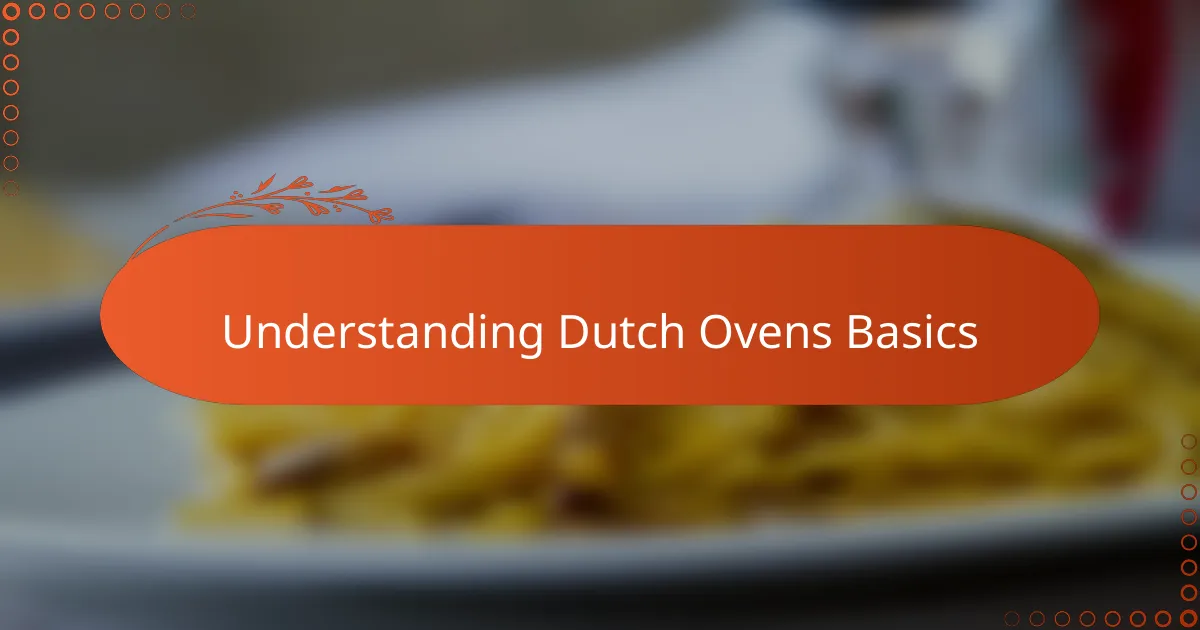
Understanding Dutch Ovens Basics
When I first started using a Dutch oven, I was amazed by its versatility. It’s essentially a thick-walled pot, usually cast iron, with a tight-fitting lid that can handle everything from slow cooking stews to baking bread. Have you ever wondered why these pots have lasted through generations? The secret lies in their sturdy construction and heat retention, which makes cooking both efficient and rewarding.
One thing I quickly learned is that seasoning the cast iron is essential. Without that layer of seasoning, the pot can rust or food might stick, and that would definitely ruin the experience for me. It takes a bit of care, but once you get the hang of it, cooking with a Dutch oven feels almost magical—like you’re connecting with a long tradition of home cooks.
Do you ever feel limited by your cooking tools? My Dutch oven changed that for me. It’s like having a tiny kitchen powerhouse that effortlessly moves from stovetop to oven. Understanding these basics helped me appreciate why this single pot became a staple in so many kitchens, especially those focused on homesteading and self-sufficiency.
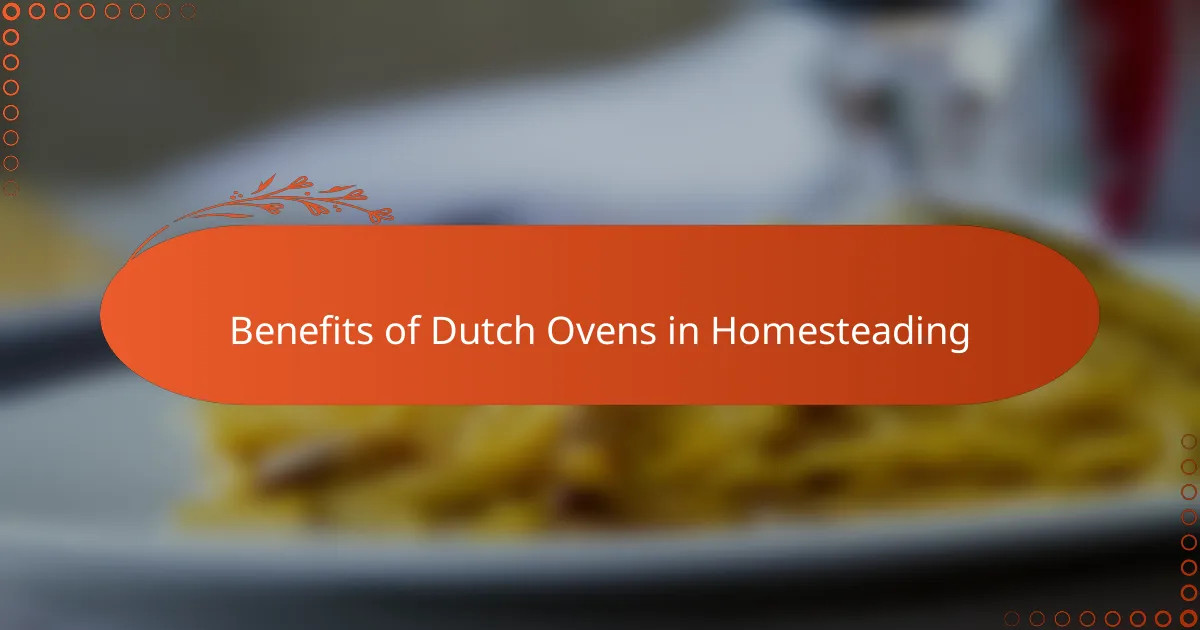
Benefits of Dutch Ovens in Homesteading
One of the biggest benefits I’ve found using Dutch ovens in homesteading is their incredible durability. I’ve had mine for years, and it still performs like new—no flimsy handles or warping lids to worry about. Knowing I’m investing in a tool that can last decades gives me peace of mind, especially when living self-sufficiently.
Have you ever struggled with uneven cooking or losing heat quickly? Dutch ovens solve this beautifully. Their thick cast iron walls distribute heat so evenly, I rarely have to babysit my meals. Whether I’m simmering beans for hours or baking a crusty loaf, the consistent heat helps me get reliable results every time.
Another thing I cherish is their versatility. In the early days of my homesteading journey, I was surprised how one pot could replace several gadgets. From frying, boiling, roasting, to baking, the Dutch oven does it all — even outdoors on an open fire. It’s like having a whole kitchen in one pot, which is a huge advantage when you’re living simply but want to cook well.
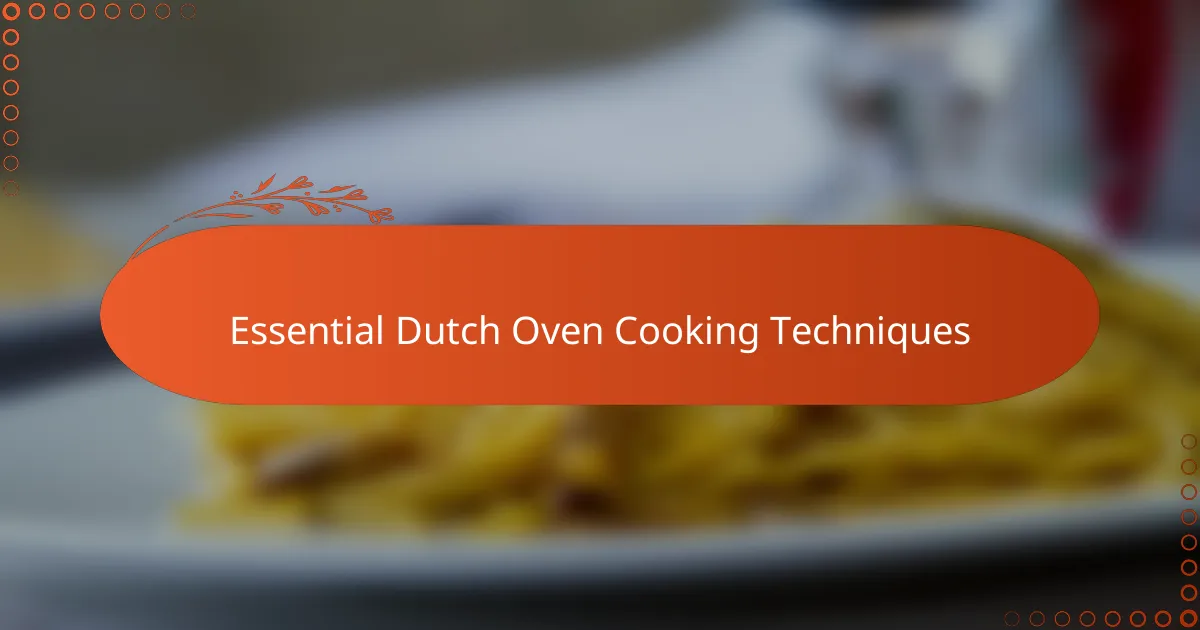
Essential Dutch Oven Cooking Techniques
Mastering heat control has been a game changer for me when using my Dutch oven. Have you noticed how adjusting the heat just right can transform a simple stew into a rich, deeply flavored masterpiece? I’ve found that starting on medium to build heat, then lowering it to a simmer, preserves flavors and prevents burning—something I learned the hard way in my early days.
Another technique I swear by is using the lid properly. Keeping it tightly sealed traps moisture inside, turning tougher cuts of meat tender and succulent. I remember one chilly evening when I forgot the lid, and the stew turned out drier than expected; since then, that lid never leaves my Dutch oven during braises.
Finally, don’t underestimate the power of preheating your Dutch oven. I used to toss ingredients in a cold pot, but once I started warming it up first, I noticed better searing and more even cooking. It makes a real difference, especially when roasting or frying, creating that perfect crust and locking in juices. Have you tried this yet? If not, it’s worth experimenting with.
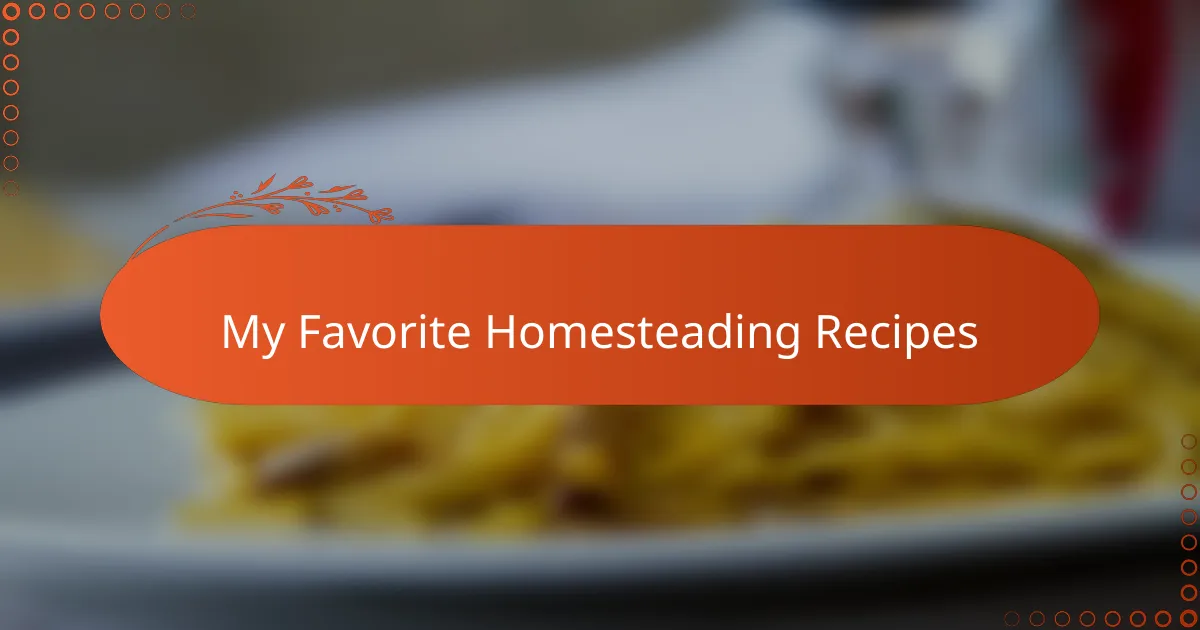
My Favorite Homesteading Recipes
There’s something deeply satisfying about the simple meals I create in my Dutch oven, like my hearty vegetable stew that simmers gently for hours, filling the house with warmth and comfort. Have you ever experienced that moment when the aroma alone makes you feel right at home? That’s why this recipe is a go-to for me—it captures the essence of homesteading cooking in every bite.
One of my all-time favorites is a classic no-knead bread baked in the Dutch oven’s cast iron embrace. Watching it rise and develop a golden, crackly crust feels almost like a small miracle. I love how a few basic ingredients come together to deliver something so rustic yet satisfying, perfect for sharing around the family table.
And then there’s the slow-cooked chili that I rely on when I need both nourishment and a sense of coziness after a long day outdoors. Cooking it low and slow in the Dutch oven lets the flavors deepen in ways a regular pot just can’t match. Have you tried making a recipe that improves by the hour? This one definitely does, making it a staple in my homesteading kitchen.
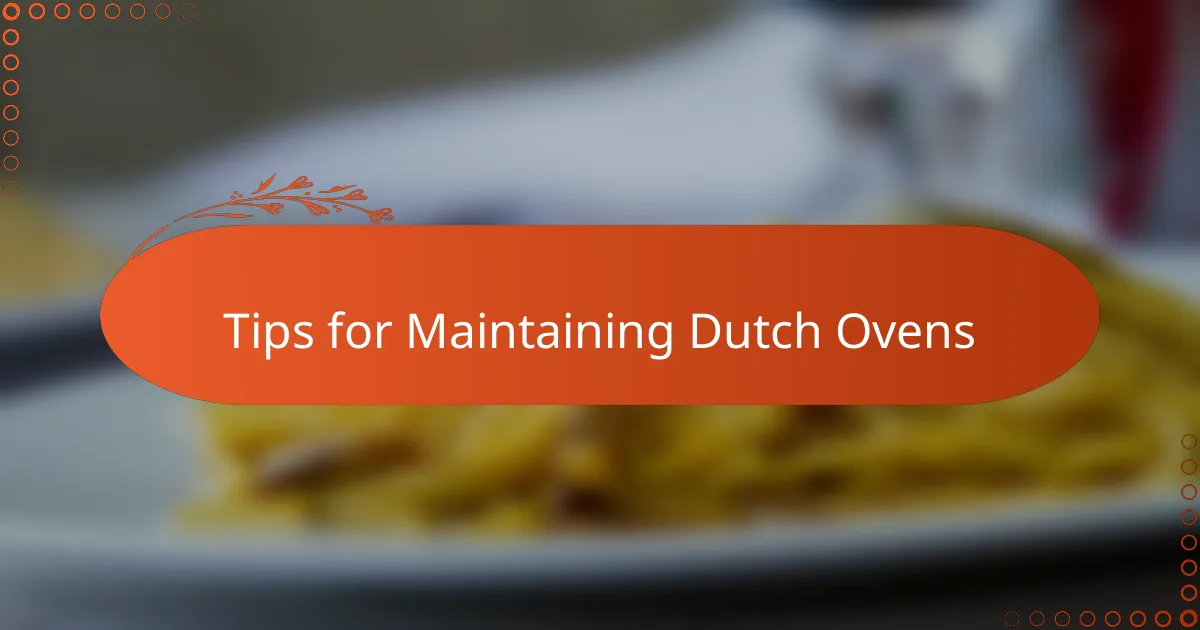
Tips for Maintaining Dutch Ovens
Maintaining a Dutch oven has become almost a ritual for me—seasoning it regularly is non-negotiable. Have you ever noticed how that smooth, almost glossy layer of seasoning makes cooking feel effortless? I’ve seen how a well-seasoned pot not only prevents rust but also turns every meal into a flavorful experience without sticking.
Cleaning is another part where I learned to be patient. For the longest time, I was tempted to scrub aggressively after cooking, but that only damages the seasoning. Now, I simply use warm water and a soft brush, avoiding soap, and dry it thoroughly. This gentle care preserves the lifetime of usefulness my Dutch oven offers, which feels rewarding every time I use it.
One tip that surprised me was storing it with the lid slightly ajar. It keeps moisture from building up inside and prevents those annoying rust spots. Have you ever opened a pot only to find it rusty and crusty? Taking this small step has saved me from that disappointment more than once, making maintenance a small price for such a reliable kitchen companion.
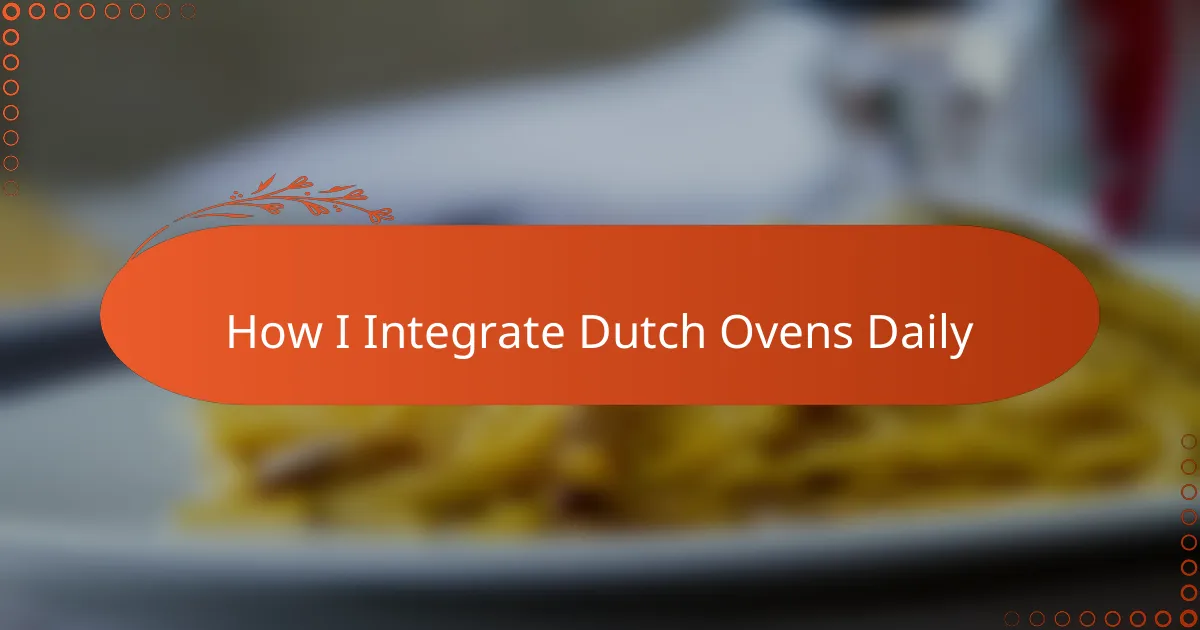
How I Integrate Dutch Ovens Daily
Integrating my Dutch oven into daily cooking became second nature after I realized just how many meals it could handle from start to finish. Have you ever found yourself juggling multiple pots and pans? My Dutch oven lets me simplify—whether I’m sautéeing vegetables or slow-cooking a stew, it’s my go-to every single day. There’s something comforting about the familiar weight and warmth of that pot when I’m bustling in the kitchen.
Sometimes, I even use it for breakfast. Cooking eggs or baking a frittata in my Dutch oven gives me a head start on a busy morning without extra cleanup later. It’s become part of my routine because it saves me time and delivers consistent results, which is priceless when I’m balancing chores around the homestead.
What I appreciate most is how this one pot adapts seamlessly to whatever cooking challenge I throw at it, from stovetop to oven, even outside over coals. It’s almost like having a silent kitchen partner that makes daily cooking more enjoyable and less stressful. Have you noticed how using tools you trust can change the whole feel of your cooking experience? For me, the Dutch oven definitely does that every day.
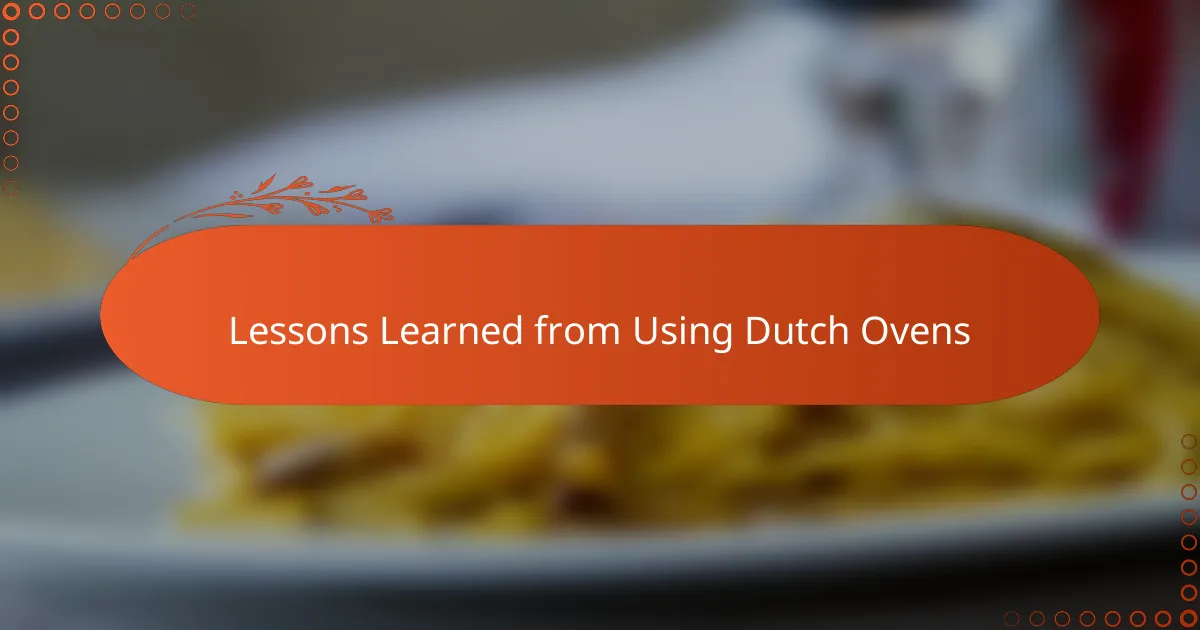
Lessons Learned from Using Dutch Ovens
One lesson that really stuck with me is the importance of patience when using a Dutch oven. Have you ever rushed a meal only to be let down by uneven cooking? I’ve definitely been there, and waiting for that slow, steady heat to work its magic taught me that good things truly take time, especially with this kind of cookware.
Another insight came from my early attempts at cleaning the pot. I used to think scrubbing was best, but I quickly learned that harsh cleaning strips away the seasoning that makes cooking so enjoyable and food so flavorful. Treating my Dutch oven gently has deepened my appreciation for both the pot and the meals it creates.
Finally, I discovered that every Dutch oven has its own personality. Some retain heat longer, others respond faster to temperature changes. Over time, I felt like I was getting to know my pot—not just as cookware but as a trusty companion. Have you experienced that connection with your kitchen tools? For me, it makes cooking feel more personal and rewarding.
